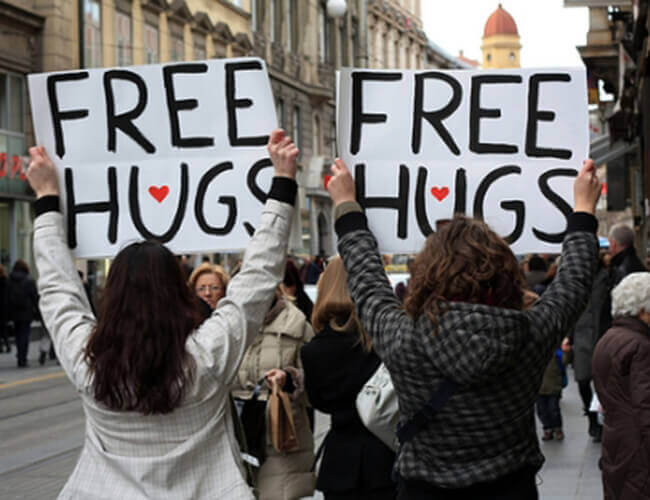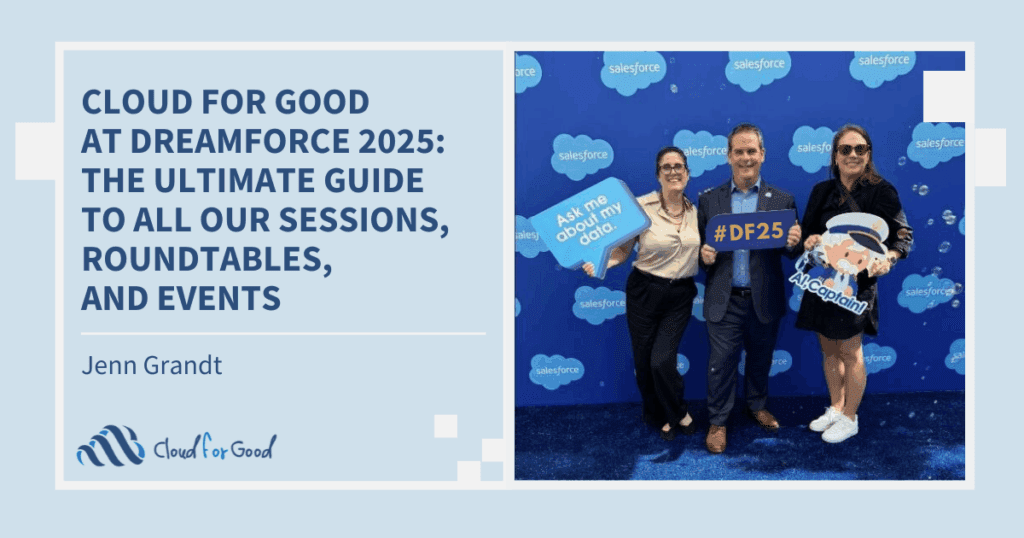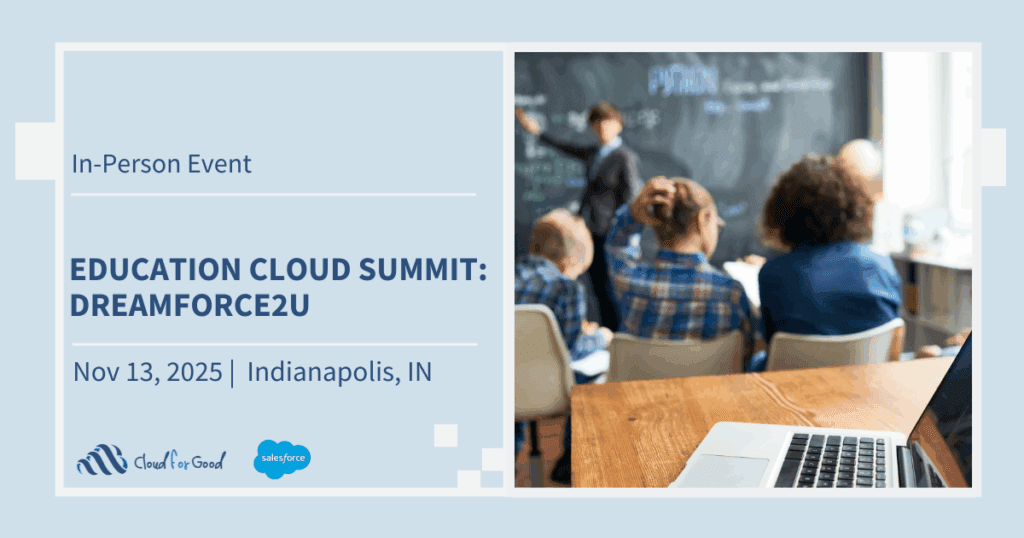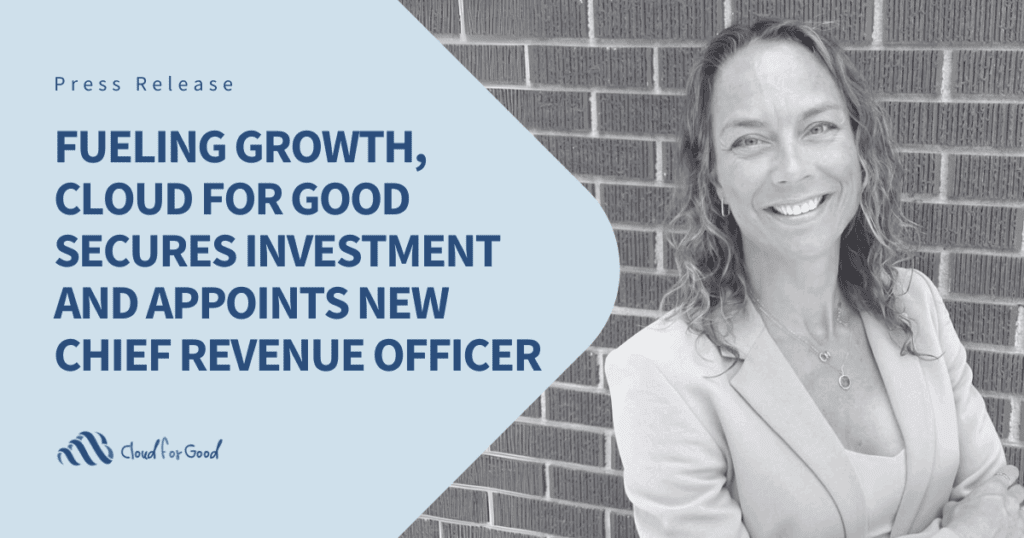Most of us think of a campaign either in old-fashioned military terms, an assault on a target with specific objectives in mind, or in marketing terms where a campaign is a way to reach out to constituents to create awareness of who you are and what you do and to convince them to support you in those efforts. Most of what is written about Salesforce campaigns sounds very much like the latter, marketing or fund-raising campaigns. Years of messing about in Salesforce have convinced me that our campaigns can be re-purposed for more creative pursuits. Let’s take a look:
It’s useful to see the Campaign as a People List, first and foremost. You can’t put organizatons in there, only the people from the orgs. So a campaign is a PEOPLE LIST to which you can, if you like, attach donations. I usually create three record types for my campaigns: Fundraising, Events, and Mailing Lists. Of course, since a campaign is a people list, every list of campaign members is a de facto mailing list.
You use a fundraising campaign to track the effectiveness of your fundraising effort. This is the “traditional” use of the campaign. You send requests for money to people (“Sent”) and if they send you back envelopes with money in them, you log the donation’s “Primary Campaign Source” field with that campaign and mark the donor as “Responded.” The basic campaign fields will do the rest for telling you what your ROI is:
- Total Contacts – the number of people in your outreach already known to you
- Total Leads – the number of people in your outreach that are still just prospects
- Total Converted Leads – the number of people this campaign has brought into the fold
- Total Responses – the number of people you’ve marked as “responded,” whatever your org means by that
- Total Value and Number of Won Donations – Here’s where you can see just what your campaign has brought in as money and as numbers of donations.
You’ll also be able to track how these numbers stack up across a hierarchy of campaigns—read on for details of how to do that. Plenty of information here for the most statistic-obsessed development team!
But that is just the surface of the power of the Salesforce campaign.
You can use campaigns instead of Contact Types for all your lists of people, especially the shifting types like board members, advisory boards, etc. In a campaign, you can label them (using the wonderful Campaign Member Status!) Past, Current, Prospective, Officer, President, etc. You can’t do that with a Contact Type. I tell my clients that only the types of people that don’t change at all– Vendors, for example– should be on the contact record. Everybody else, media included, should be a campaign people list. (It’s true that you can’t put WXYY into a campaign, but when you want to reach them, you call a PERSON, right? Add your main contact to the campaign.)
I suggest that my clients put the folks they are hoping to convert to donors to a particular fundraising effort in a campaign, called something like “Fall Appeal Major Donor Prospects.” Then they track the progress of getting the prospect to the point where they can log the deal as an opportunity. This is a pre-donation donation-tracking device!
For the full expression of the power of the campaign, I look to events. Because you can set the campaign member status to ANYTHING in a campaign, you can put everybody who has any role whatsoever into your campaign. Here’s how to think about it:
1. Set up your Campaign Member statuses right at the beginning. Campaign > Advanced Setup > Edit
2. Put in every role that anybody is playing in the event– Planning Committee, Planning Chair, Volunteer (unless you are using Volunteers for Salesforce, in which case THAT campaign would be a child of this one), Staff Lead, Vendor (or you can get specific and put in the Lighting, Stage Setup, Cleanup Crew, Napkin Furnisher), Registered, Paid, Attended, No Show, Participant/Veg Lunch, Participant/College Credit– WHATEVER!
3. Mark as “Responded” only the participants or attendees, so you get the count of the people who came that way.
4. Log the registration fees with this as the Primary Campaign Source.
You can customize your page layout for the events with fields like Location (with a lookup to orgs so you can pull in hotels, conference centers, even rooms in your own museum.) You can put different date/time fields there for Setup Time, Start Time, etc.
Voila– event management!
The other great thing about campaigns is their ability to be nested together in hierarchies, as I mentioned above, and for some of the numbers to roll up to the parent campaigns. So say you’re running a Fall Appeal that consists of an email drip campaign with four blasts, a snail mailing to your major donors, and a gala banquet. All those can be different campaigns nested as children under your Fall Appeal 2013 campaign and there you can see the aggregate of the money you’ve raised while keeping the money raised by the individual children campaigns on those campaigns so you can come up with a comparison.
Salesforce makes it especially convenient to add people to various campaigns.
- List views. On the Contact Home page, create a list view of contacts and put one of your recent campaigns into the Filter by Campaign box. Up comes a list of everybody in THAT campaign, and you can check off all the people you want to add to a new campaign. Save the view, and there is an Add to Campaign button right at the top of your list. Add the old list to the new campaign and you’ve got a head start on peopling your campaign.
- Reports. Reports that have Contacts or Leads at their heart will also have an Add to Campaign button on them. In reports, you can get very specific about segmenting your list. Donors who gave above one amount but below another, for example. Or use the cool bucketing functionality to slice out different categories – regions, donation totals, lifetime donation totals, household size…whatever! Then add them to a campaign.
- Old-Fashioned Bulk Upload. Fire up your favorite bulk upload tool and add contacts and leads alike to campaigns. Some people use this method to get a de-duplicated list. The campaign in Salesforce won’t take duplicates, so this is one way to make sure you are only sending to each individual once.
Actually the hardest part about using campaigns as donation-tracking people lists or for complex event management is expanding our concept of the name: Campaigns. Sometimes, though, you just have to “think in Salesforce.” It sounds like English, but we need to shift the definitions a little to get to the magic!





